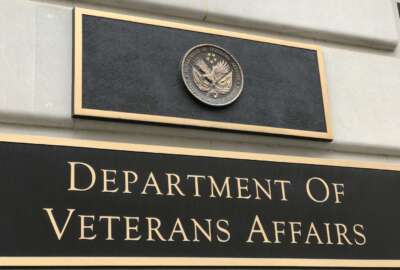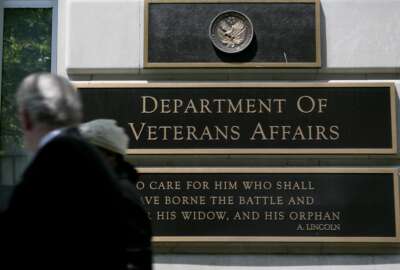

Despite the Veterans Health Administration remaining on track to reach year-end targets to increase health care staff, problems persist in VHA’s recruitment and...
Ongoing recruitment challenges for the Department of Veterans Affairs’ health care workforce are gaining more attention — and concerns — from Congress.
The Veterans Health Administration is on track to reach its year-end target increase for its total number of employees. But problems persist in VHA’s hiring and onboarding processes, lawmakers on the House Veterans Affairs Committee said.
“We all know that this is a crisis situation. It was a crisis before COVID. It’s a bigger crisis now. And we have to treat it accordingly and work on this in a way that we can really expedite,” Rep. Julia Brownley (D-Calif.) said during a VA committee hearing Wednesday. “[VA has] hired more people than they have historically … but we just have to even do better than that.”
For fiscal 2023, VHA is “well on its way” to exceed the 48,500 hires it made in 2022, said Tracey Therit, VA’s chief human capital officer, during the hearing. VHA’s total workforce grew by more than 13,600 employees, or 3.6%, in the first seven months of fiscal 2023. That’s another roughly 2,000 employees more than what VHA had one month ago, and the highest growth rate in over two decades.
“These efforts will position us to meet our goal of 52,000 new VHA employees this fiscal year, which would result in a growth of over 3% in the overall size of the VHA workforce,” Therit said.
But a long hiring process raised more questions from lawmakers, who said that the extensive time-to-hire is causing quality candidates to accept other positions before VHA can officially offer them a job. VHA has made recent progress in speeding up the hiring process this year, but depending on the position, the process can still take nine months.
“We have lost many providers just because of the length of time it’s taken. We’ve gotten excited about new providers … and then it’s taken six-plus months, so we’ve lost them,” Rep. Jen Kiggans (R-Va.) said.
To address the issue, VA is “looking very closely at shifting from a time-to-hire model to a time-to-fill model,” Therit said. “There are a lot of steps that need to be taken from the time a position is vacated until that next person arrives.”
Currently, there are 83 separate steps in the recruitment process for VHA, according to Jessica Bonjorni, VA’s chief of human capital management.
“27 of them are things that we’re working on, doing process redesign on right now,” Bonjorni said during the hearing. “There are also a handful that require regulatory changes to make a difference. And then there are 12 that would require a legislative change.”
“We really need to look at what’s happening at each step in the process, where we have increased the bureaucracy, [then] reduce that bureaucracy or eliminate it completely where possible,” Therit added.
Officials at the American Federation of Government Employees, the federal union representing many VHA employees, said there’s an underlying issue contributing to time-to-hire challenges as well.
“I think it has more to do with how they’re lagging those positions financially, in order to then let the appropriation catch up to the facility and allow the position to be filled,” Mary Jean Burke, first executive vice president of AFGE’s National VA Council, told Federal News Network. “Those are the things that really are not in the metrics.”
Internal operations in human resources, as well as a lack of reliable workforce data at VHA, are further worsening recruitment challenges, said Sharon Silas, director of the Government Accountability Office’s health care team.
“Reliable onboarding data is important to ensuring effective monitoring of timely hiring. It allows VHA to set baselines, track trends and measure timeliness across facilities to target where there may be pain points on the onboarding process,” Silas said during the hearing.
But discrepancies in the agency’s human resources department when coding positions are further contributing to confusion and a lack of transparency during onboarding for new hires, creating a “bait-and-switch” for their exact salaries.
“I am aware of issues with offers being made to employees, which are later changed when they accept the job. This bait-and-switch in salary, job description and schedule do not imbue a sense of confidence among employees who are looking to take new positions at VA,” Rep. Frank Mrvan (D-Ind.) said during the hearing.
To address the issue, AFGE’s Burke said there should be much more transparency in the recruitment and hiring process, something that’s all the more important given a shortage of health care workers nationwide. Giving candidates a clear written job offer outlining functions, specific salary rate, hours of work and any variability, will ultimately help with recruitment and retention issues.
“With so few candidates, you can’t afford for that to be wrong at all,” Burke said. “The job offers have to be absolutely correct.”
Worsening problems with the hiring process at VHA, though, there are internal challenges within the agency’s HR office.
“Severe shortages among HR staff, particularly HR specialists who are responsible for helping recruit retain and onboard employees has led to an inability to provide quick responses or timely turnaround in many aspects of the hiring process. This leads to qualified candidates taken other positions outside of the VHA system,” Kelley Saindon, a chairman on the Nurses Organization of Veterans Affairs, said during the hearing.
To try to address the challenges, at least in part, lawmakers said VHA should increase proactive efforts to seek out candidates, before there is an opening, to try to expedite the recruitment process from the front end.
“They’re not just going to turn on a television set or open up a magazine and see all the different possibilities — they have to seek it out,” Brownley said. “That’s part of the challenge — how are we recruiting? How are we bringing very qualified candidates into the VA?”
Beyond the efforts to bring more health care employees on board more quickly, VHA is also taking steps to address retention challenges, for example by posting detail opportunities to a central database for internal employees to see them, as well as looking to expand the continuing professional education reimbursement process.
“We are very interested in making sure all of our providers have the chance to continue to improve on their education and skills,” Bonjorni said.
Copyright © 2025 Federal News Network. All rights reserved. This website is not intended for users located within the European Economic Area.
Drew Friedman is a workforce, pay and benefits reporter for Federal News Network.
Follow @dfriedmanWFED



